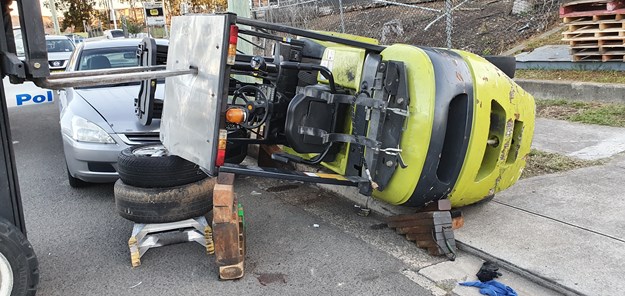Incident reports respond to recent worker fatalities in NSW
SafeWork NSW has issued incident reports on managing the risks of working with cranes and forklifts following recent workplace fatalities.
In the first instance, a 60-year-old worker was crushed and died after becoming trapped between the arm of a vehicle-loading crane and the truck it was mounted on.
The incident occurred as the crane was lifting equipment onto the back of the truck and, although the emergency stop was activated, the worker couldn’t be freed until emergency services arrived.
SafeWork says operators must implement ‘reasonably practicable’ control measures to manage the risks associated with using vehicle-loading cranes, including:
- choose the right equipment for the job and only use it for the purpose it was designed
- follow the manufacturer’s guide for inspections, maintenance and testing
- any inspection, maintenance or testing is completed by a competent person
- fluid levels and pressures are correct, and any hydraulics are working correctly
- all operators are trained in how to use the crane, and hold a high-risk work licence for a vehicle-loading crane – class CV or one of the four slewing mobile crane classes – if the crane has a capacity of 10 metre tonnes or more
- there are no obstructions to the crane operator – they can see the load at all times during the lift; if the load is outside the operators view, the lifting process must be directed by a licensed dogger or rigger
- operational warning devices (where fitted) are automatically operated when the crane is in use
- emergency stops are located at each control station
- the crane is always level and only operated within its rated capacity
- outriggers are fully extended and located on pads or other support material
- you establish exclusion zones to separate people and moving plant.
Operators are also asked to consider:
- using constant pressure controls, so operation stops when you release the controls
- using remote controls
- installing operational warning devices (audible alarm or flashing light) if not already provided
- installing slew limiters, to stop the boom hitting the operator
- installing physical barriers or guards to prevent access to dangerous parts
- providing controls that can only be operated from where the boom or load can’t be lifted over the operator.
SafeWork’s report on truck rollaway-incidents, here
Meanwhile, a 31-year-old worker was killed when his forklift tipped over and crushed him as he was driving down a driveway (pictured), marking the second forklift fatality in NSW during the past five months.
Before operating a forklift, SafeWork advises operators:
- must hold a current high-risk work licence (class LF), be familiar with the operating controls and know the limitations of the forklift
- should always complete a pre-start safety check, such as: fluid levels (hydraulic oil, brake fluid and water), seat and seat belts, steering, brakes, park brake, lights and operating controls, hydraulic operations, such as lift, tilt and sideshift, tyre condition and pressures (if applicable), fork tynes and attachments, load-rating plate and safety decals, test drive and function tests.
- should check that regular maintenance and servicing has been carried out
- must not be not be under the influence of drugs or alcohol, or suffering from fatigue, injury or illness.
Then, when operating a forklift, operators must:
- wear a seatbelt, unless a risk assessment indicates it’s not safe to do so and other controls prevent being ejected from the forklift
- drive at a safe speed, noting site speed limits, load size, ground and weather conditions
- avoid aggressive driving, braking and steering, especially when turning
- never turn sideways on ramps or other sloping surfaces
- avoid driving on an incline with the load facing downhill
- never overload the forklift
- never drive with an elevated mast and load, unless you’re picking up or putting away the load
- ensure all loads are centred and secured.
When the forklift is left unattended, the ignition key should be removed, or ignition control locked off to stop unauthorised people from using it.
If the forklift does tip over, an instinct may be to jump. SafeWork says this is likely to cause serious crush injuries or death. In a forklift tip-over, it advises operators to remain seated and don’t lean out of the forklift, and to brace one’s feet, hold tight and lean away from the point of impact.



